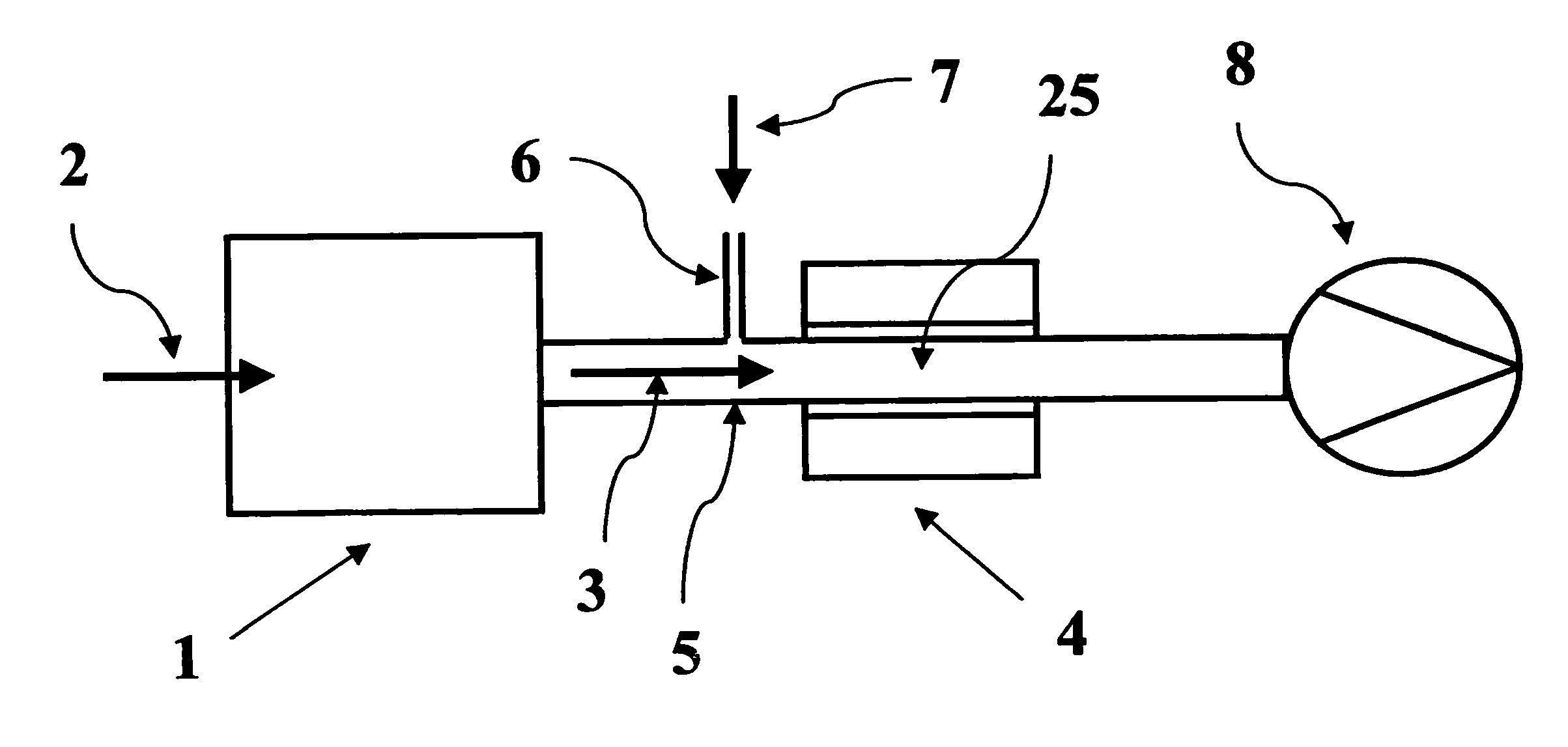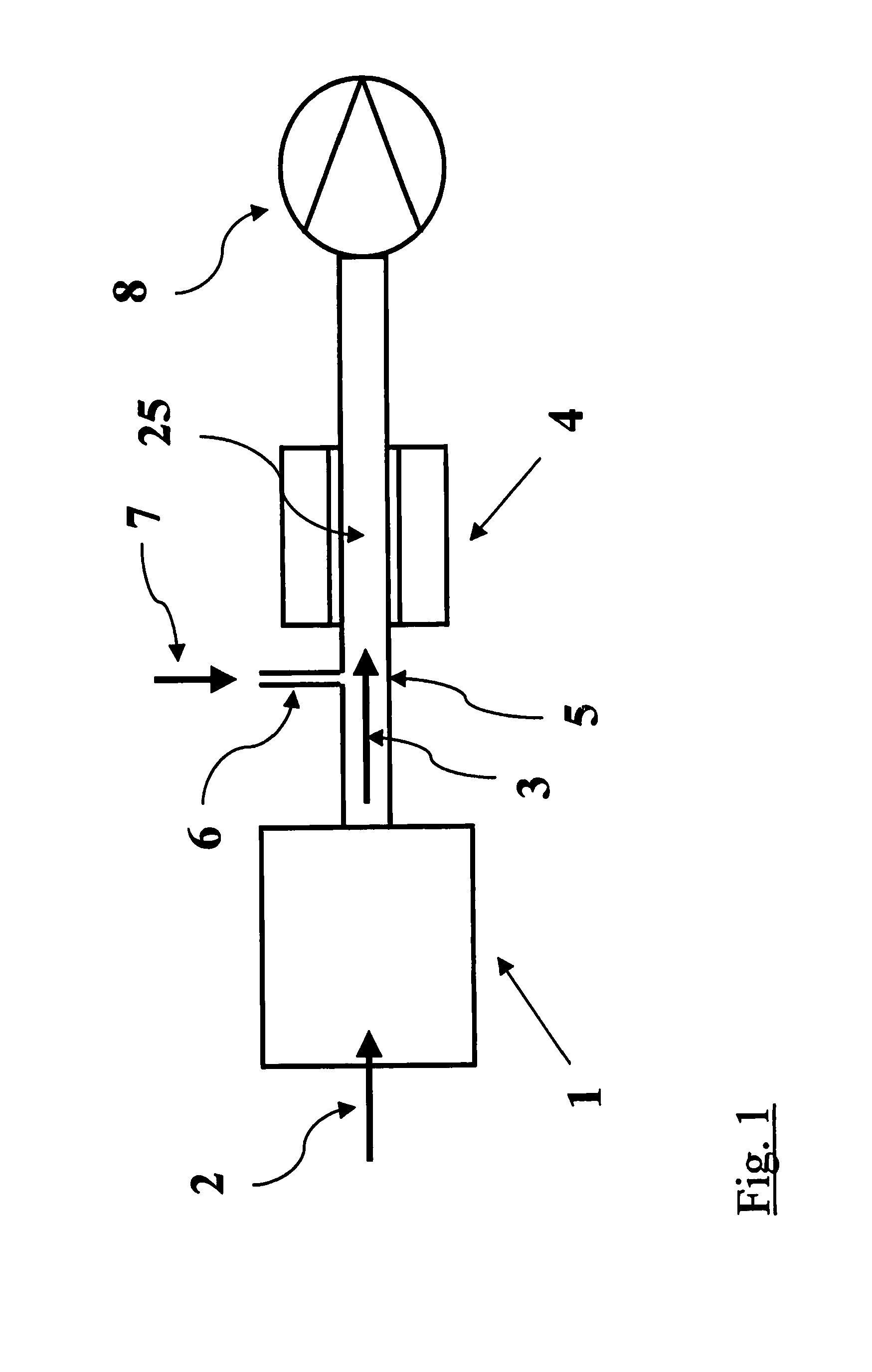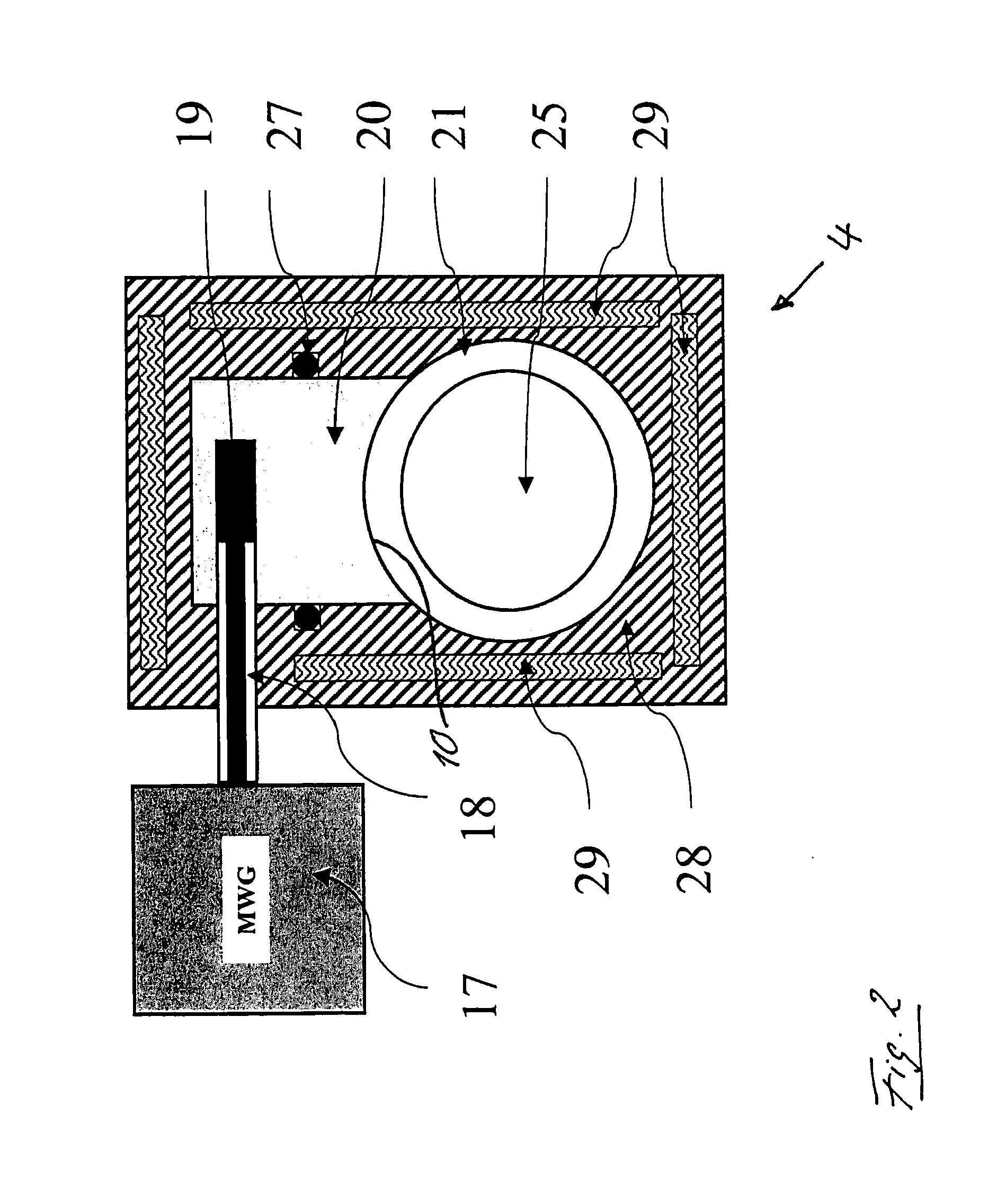Method and device for cleaning the waste gases of a processing system
a technology of processing system and waste gas, which is applied in the direction of machine/engine, separation process, lighting and heating apparatus, etc., can solve the problems of toxic non-metal halides, and achieve the effect of effective and defined cooling, and minimal condensation or precipitation
- Summary
- Abstract
- Description
- Claims
- Application Information
AI Technical Summary
Benefits of technology
Problems solved by technology
Method used
Image
Examples
Embodiment Construction
[0040]According to FIG. 1, a non-metal halide, e.g.; CF4, is fed into a processing system 1, for example an etching chamber, according to the arrow 2, for etching a silicone semiconductor substrate. In this case, an etching process can be carried out in which a plasma is used to form excited and / or ionized particles from the non-metal halide. The plasma of the processing system 1 can be produced, for example, by using a device as per DE 10 2006 006 289 A1.
[0041]In the processing system 1, only a fraction of the non-metal halide, that is, CF4, for example, is used up. The largest fraction of the non-metal halide thus exits the processing system 1 as a waste gas, wherein, as represented by the arrow 3, it is fed, according to the invention, into the waste gas cleaning device 4, according to the invention, which is connected with the processing system 1 via the waste gas line 5.
[0042]A feed line 6 is connected to the waste gas line 5, via which a gas is mixed to the waste gas according...
PUM
| Property | Measurement | Unit |
|---|---|---|
| frequencies | aaaaa | aaaaa |
| frequencies | aaaaa | aaaaa |
| frequencies | aaaaa | aaaaa |
Abstract
Description
Claims
Application Information
 Login to View More
Login to View More - R&D
- Intellectual Property
- Life Sciences
- Materials
- Tech Scout
- Unparalleled Data Quality
- Higher Quality Content
- 60% Fewer Hallucinations
Browse by: Latest US Patents, China's latest patents, Technical Efficacy Thesaurus, Application Domain, Technology Topic, Popular Technical Reports.
© 2025 PatSnap. All rights reserved.Legal|Privacy policy|Modern Slavery Act Transparency Statement|Sitemap|About US| Contact US: help@patsnap.com



